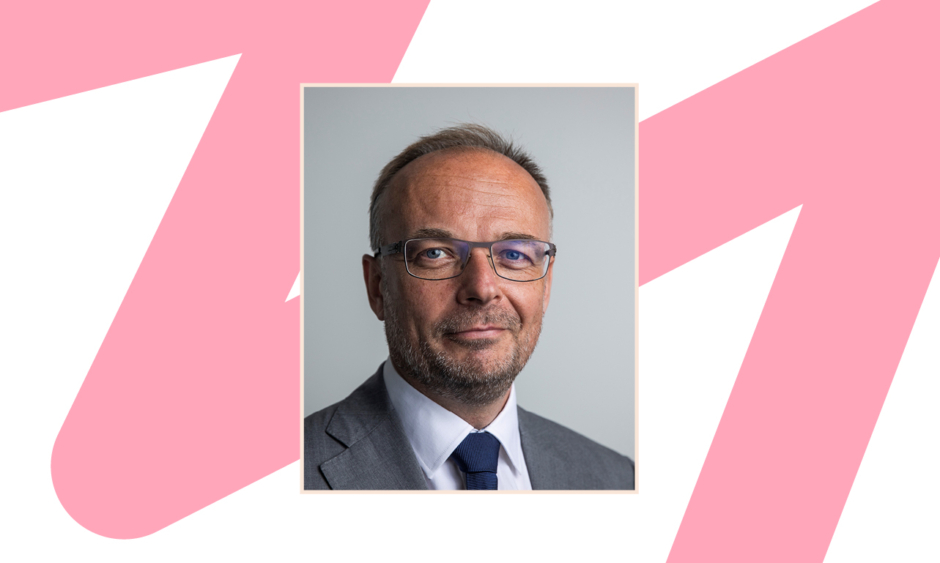Aleksander Krag | Professor, Department of Clinical Research, University of Southern Denmark; Chair of Health Sciences, Danish Institute of Advanced Studies (DIAS), University of Southern Denmark; Head of Hepatology, Odense University Hospital, Denmark; Director, Odense Liver Research Centre, Odense University Hospital, Denmark
![]()
What initially sparked your interest in the field of hepatology?
Hepatology is an exciting and challenging clinical discipline with many great research opportunities and a vibrant international community. This field is rich, and there are moments where you will feel more like a detective. Diagnosing liver diseases can be very challenging. Thus, there is always more to learn, and nobody knows it all.
What are the main goals of the European Association for the Study of the Liver (EASL) congress, and what has your role as vice-secretary been like thus far?
EASL is a medical association dedicated to pursuing excellence in liver research, clinical practice of liver disorders, and in the provision of the best-in-class education for all those interested in hepatology. The EASL Congress is the incarnation of all we do; bringing people interested in liver diseases from across the world together to learn, to share, and to exchange knowledge and new data that can advance the field from clinical care to basic science. My first year in the leadership of EASL has already passed. Lots of learning, things achieved, things to celebrate, and much more to do. What a journey! When I started, I was concerned by the 4-year term; now, 4 years seems short. I enjoy it immensely. When I think about what EASL stands for, values like unites, advances, share, collaborative, innovative, diverse, and friends come to my mind. That is basically my motivation to join the EASL governing board: something valuable and worth supporting, that resonates with my values in life.
Which advancements have occurred in the discipline of hepatology since you began your career?
There are many. At the EASL Congress in London, UK, we celebrated one, the invention of the transjugular intrahepatic portosystemic shunt, and awarded Martin Rössle the EASL Innovation Award. His invention has improved care among thousands of patients. But also, better diagnostics, such as the introduction of elastography, have changed and improved clinical practice.
You set up the Fibrosis Fatty Liver and Steatohepatitis (FLASH) Research Centre in Odense, Denmark, which focuses on clinical and translational research. Can you tell us more about FLASH and its aims, and what has been achieved thus far?
The overall aim is to help reduce the burden of alcoholic liver disease (ALD) and non-alcoholic fatty liver disease (NAFLD) on health and healthcare costs by scientific means; to generate clinically relevant and usable biomarkers and interventions for management of ALD and NAFLD. FLASH is involved in four Horizon consortia, and several active projects. On the biomarkers front, we have shown how elastography and the enhanced liver fibrosis test hold strong prognostic value in early alcohol-related liver disease. In June, we published an article about how proteomics biomarkers can potentially outperform all current diagnostic and prognostic biomarkers in ALD. At the EASL Congress in London, we presented two randomised controlled trials: one on the effects of rifaximin in early ALD, and one on a low-carb, high-fat diet for patients with NAFLD and Type 2 diabetes.
What would you say are the benefits of belonging to EASL, and what is the impact of the association on both hepatologists and patients?
EASL is sort of a gateway to the international community. EASL unites hepatology; it brings together all stakeholders including patients and patients’ organisations and works towards a shared goal: improving care of liver patients across the world through science, education, policy, and awareness.
You are co-ordinator of the GALAXY project, the aim of which is to optimise personalised healthcare for patients. Why do you feel that personalised healthcare is so important, and what are some of the benefits it can offer to patients?
Humans are different. People who have a disease are not alike, and the current ‘one size fits all’ approach is becoming obsolete. In many situations, we need to treat 10 individuals for one to benefit. But we do not know who is most likely to benefit. Personalised care is when you know who is likely to benefit or not, and only treat those who are likely to benefit.
In 2022, you co-authored a paper entitled ‘The negative bidirectional interaction between climate change and the prevalence and care of liver disease’. What conclusions did this paper reach, and how do you feel climate change will impact healthcare on a more general level in future?
The association between climate change and liver health and disease, and the need for sustainable hepatology services, must be recognised. This is a key concern for EASL. We all need to do our part, take responsibility, and act. The four main domains of sustainable healthcare are prevention, patient empowerment and self-care, lean service delivery, and provision of low-carbon alternatives.
How has the COVID-19 pandemic affected your work? Has the shift to online teaching and virtual congresses brought any unforeseen benefits?
COVID-19 has propelled innovations in how we interact and work together with very effective online platforms for communication and education. Many processes have been sped up, and we have become even more effective. There has also been less travel, with a positive effect on the climate.
Which recent advances and innovations in the field of hepatology excite you the most?
There are many. The emergence of novel biomarkers to guide clinical decision will change clinical practice. Yet, this is just the beginning. Artificial intelligence and omics technologies are picking up speed, and will soon translate into clinical medicine. The introduction of direct-acting antivirals to treat hepatitis C was a revolution. Currently, we have several very exciting new drugs for the large disease groups such as hepatitis B, hepatitis D, and non-alcoholic steatohepatitis in late-phase testing. But we also see early breakthroughs in the rare disease field, such as with alpha-1 antitrypsin deficiency, Wilson’s disease, and primary biliary cirrhosis.
Which advice would you offer to someone beginning a career in hepatology?
Join EASL, the international community; be inspired, see and learn from others. It will bring learning and a nice contrast to your day-to-day business. It’s an ecosystem where you have the chance to capture the bigger picture of where the field is moving, and widen your horizon. I would encourage young hepatologists to join EASL because of the various programmes the association offers to young investigators to develop their skills, and push their research further; this is a unique opportunity. Use the EASL network to stay connected, or to take the next step to pursue your dreams and grow. EASL supports the younger generation of hepatologists by offering different programmes such as Schools, Masterclasses, Mentorships, and Awards. The next generation of hepatologists can take advantage of this, to carry our field forward into the future, into the next discoveries.








